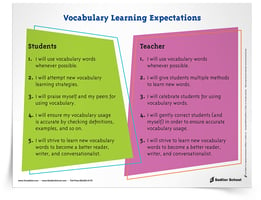1.800.221.5175
Mathematics
Sadlier PreK with Wiley Blevins
Knowledge-Building Early Childhood Program
Preview
|
Progress Mathematics
Grades K–8
Reading & Writing
From Phonics to Reading
Grades K–3
Building Reading Success with Wiley Blevins
Grades K–5
Vocabulary
Vocabulary Workshop, Tools for Comprehension
Grades 1–5
Vocabulary Workshop Achieve
Grades 6–12+
|






 Content-area teachers combed through the word lists and highlighted the target words that related to their disciplines. They then posted these discipline-specific words in their classrooms for students to see all year long.
Content-area teachers combed through the word lists and highlighted the target words that related to their disciplines. They then posted these discipline-specific words in their classrooms for students to see all year long.
 This way, all the teachers in a school can highlight how the prefixes, roots, and suffixes relate to the specific words in their disciplines. The more often each teacher asks students to highlight the word parts when they come up in their lessons, the more clearly students can understand how word study is useful to all of their subject areas.
This way, all the teachers in a school can highlight how the prefixes, roots, and suffixes relate to the specific words in their disciplines. The more often each teacher asks students to highlight the word parts when they come up in their lessons, the more clearly students can understand how word study is useful to all of their subject areas.